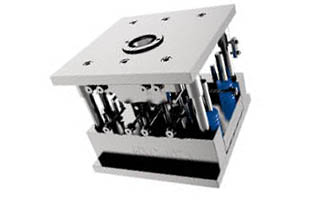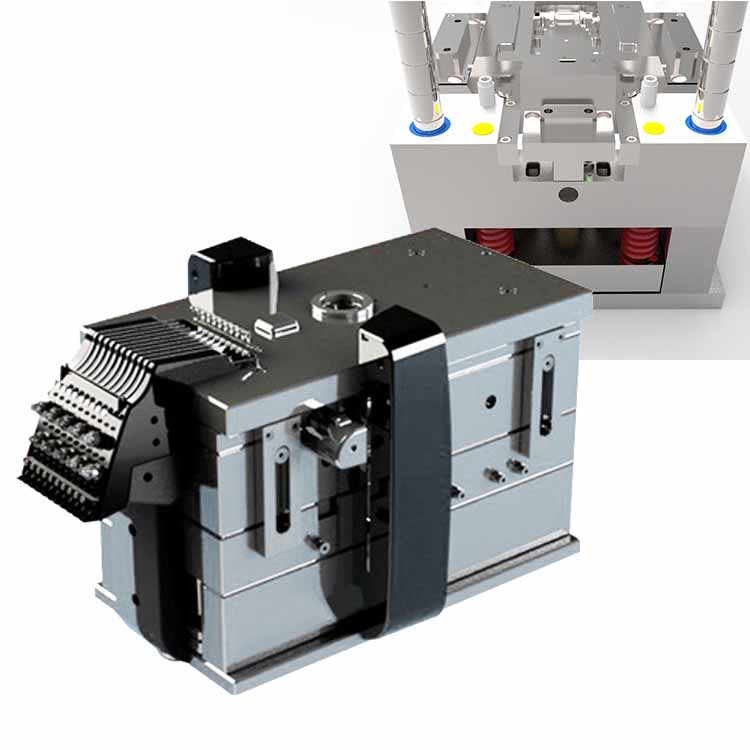How to reduce defects in plastic mold processing

Preparation of plastic mold processing blanks → rough machining of parts → semi precision machining → heat treatment → precision machining → surface treatment of mold cavity → mold device → machine debugging. During the preparation period of raw materials, corresponding raw materials are provided for plastic mold processing parts, and processing skills are formulated. Of course, processing skills should be determined based on the precision requirements of the parts and the type of materials.
The main content of the plastic mold processing device is to assemble the processed mold parts and standard parts into a complete mold according to the requirements of the mold assembly diagram. During the device process, certain mold parts need to be polished and repaired. After the trial mold, certain parts still need to be adjusted and repaired to ensure that the plastic mold processed parts meet the requirements of the drawing, and the plastic mold processing can be operated continuously normally, before the plastic mold processing process is completed.
How to reduce drawbacks in plastic mold processing:
In the plastic mold processing process, Donglai Precision Mold Factory should choose and adjust grinding wheels reasonably. It is better to use white corundum grinding wheels, which are hard and brittle in function and easy to produce new cutting edges. Therefore, the cutting force is small and the grinding heat is small. It is better to use medium particle size, such as 46-60 mesh, in the grinding wheel hardness, choose medium soft and soft (ZR1, ZR2 and R1, R2), that is, coarse and low hardness grinding wheels. Good self excitation can reduce cutting heat. It is very important to choose the appropriate grinding wheel during precision grinding. Regarding the high vanadium and high molybdenum condition of mold steel, choosing GD single crystal corundum grinding wheel is suitable. When processing hard alloys and materials with high quenching hardness, priority should be given to using diamond grinding wheels with organic binders. The organic binder grinding wheel has good self grinding performance and the roughness of the ground workpiece can reach Ra0.2 μ m. In recent years, with the application of new materials, CBN (cubic boron nitride) grinding wheels have shown excellent machining performance. They are superior to other types of grinding wheels in precision machining on CNC forming grinders, coordinate grinders, and CNC inner and outer circular grinders. In grinding processing, attention should be paid to timely dressing the grinding wheel, adhering to the sharpness of the grinding wheel. When the grinding wheel becomes blunt, it will slide and rub on the surface of the workpiece, causing surface burns and a decrease in strength.
Donglai Precision Mold Factory should reasonably use cooling and lubricating fluids during the plastic mold processing, promote the three major functions of cooling, brushing, and lubrication, adhere to cooling, lubrication, and cleaning, and then control the grinding heat within the allowable range to avoid thermal deformation of the workpiece. Improve the cooling conditions during grinding, such as using oil immersed grinding wheels or internally cooled grinding wheels. Introduce cutting fluid into the middle of the grinding wheel, and the cutting fluid can directly enter the grinding area, exerting a useful cooling effect and avoiding surface burns of the workpiece.

During the plastic mold processing at Donglai Precision Mold Factory, the quenching stress after heat treatment needs to be reduced to the minimum limit. Due to the quenching stress and network carbonization structure under the action of grinding force, the phase transformation of the structure is easy to cause cracks in the workpiece. Regarding high-precision molds, in order to eliminate residual stresses during grinding, low-temperature aging treatment should be carried out after grinding to improve durability.
In the plastic mold processing process, Donglai Precision Mold Factory can eliminate grinding stress by immersing the mold in a salt bath at 260-315 ℃ for 1.5 minutes, and then cooling it in 30 ℃ oil. This can reduce the hardness by 1HRC and residual stress by 40-65%.

